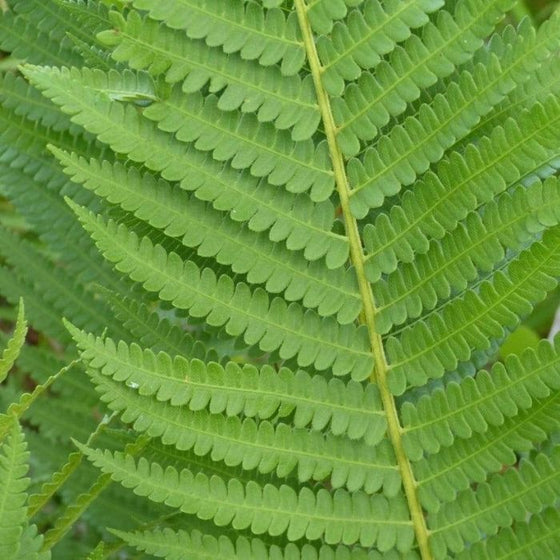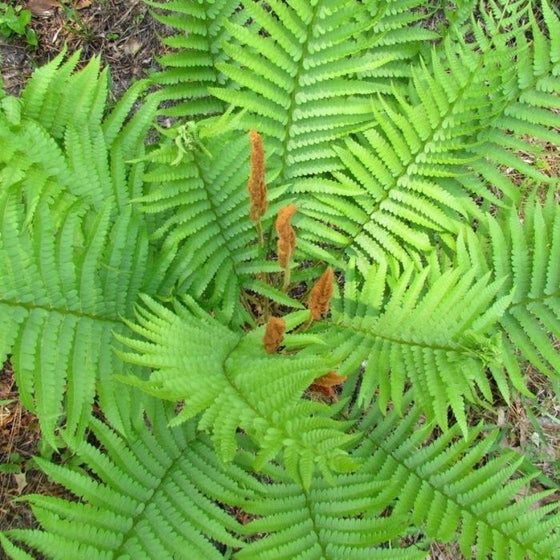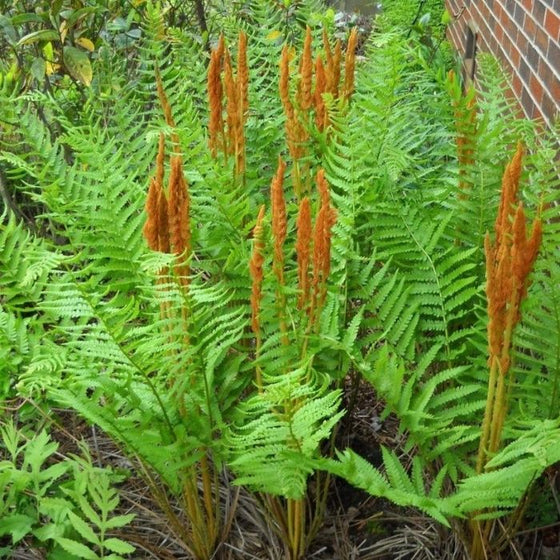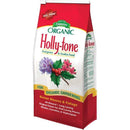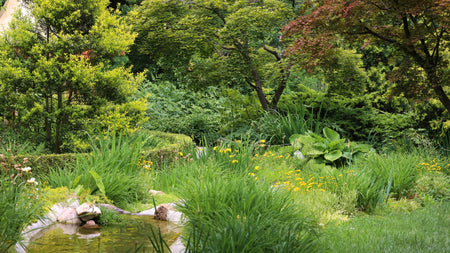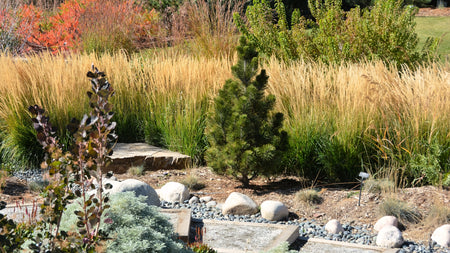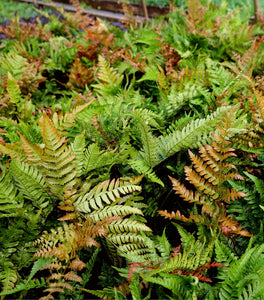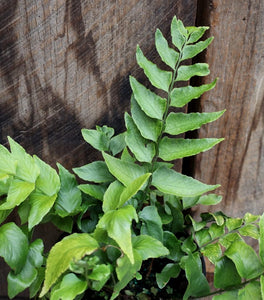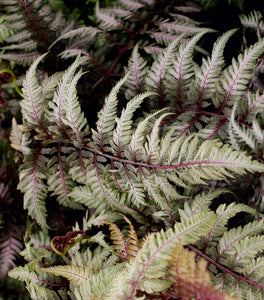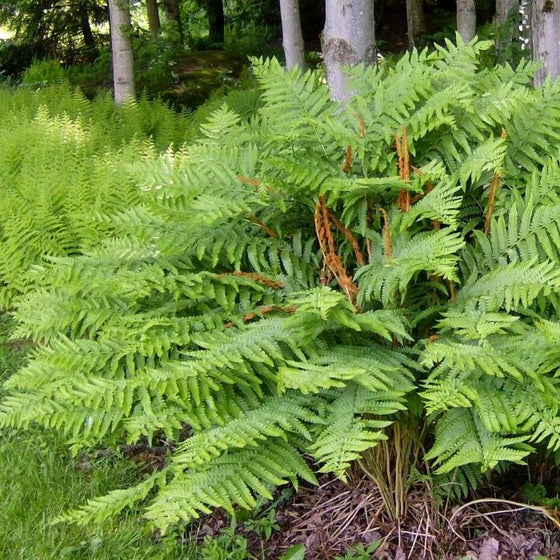
Images Depict Mature Plants
Cinnamon Fern Plants for Sale Online
Cinnamon Fern (Osmundastrum cinnamomeum) is a striking, deciduous fern that adds a bold, natural beauty to shaded and moist garden areas. Named for its distinctive cinnamon-colored fertile fronds that rise above the lush green foliage in spring, this fern creates a dramatic focal point in woodland gardens, shaded borders, and along streams or ponds. Cinnamon Fern thrives in USDA Hardiness Zones 3-9, making it a versatile choice for a wide range of climates. It prefers partial to full shade and moist, acidic soils, making it perfect for naturalized settings and rain gardens where it can thrive with minimal care.
Cinnamon Fern grows to a mature height of 3 to 5 feet, with a spread of 2 to 3 feet, forming tall, graceful clumps that bring texture and movement to the garden. The vibrant green fronds are complemented by the cinnamon-colored spore-bearing fronds that appear in the center, providing both visual interest and a unique contrast. These fertile fronds give the plant its name and add a beautiful vertical element to garden beds. The foliage of Cinnamon Fern turns a golden-yellow in the fall, adding seasonal color before it goes dormant for the winter. Plant Cinnamon Fern alongside other shade-loving plants like hostas, astilbes, and Solomon’s seal to create a rich, layered look in woodland or shaded garden areas.
Cinnamon Fern is also valued for its ecological benefits, as it provides cover for small wildlife and helps stabilize soil in wet areas, reducing erosion. It is deer-resistant, making it a reliable option for gardens where browsing can be an issue. This fern is ideal for rain gardens, boggy areas, or near ponds, where its moisture-loving nature can truly shine. With its striking appearance, adaptability, and easy-care requirements, Cinnamon Fern is a beautiful addition to any shade garden, adding height, texture, and natural beauty throughout the growing season.
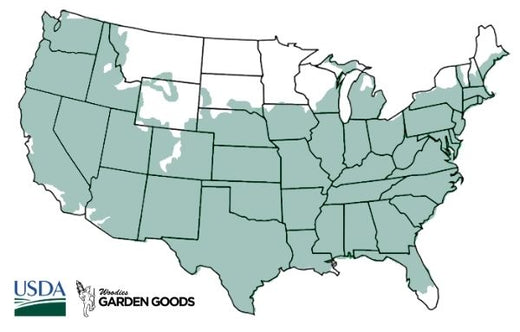
| Hardiness Zone: | 3-9 |
|---|---|
| Mature Height: | 3 to 4 Feet |
| Mature Width: | 2 to 3 Feet |
| Sunlight: | Full shade to partial shade |
| Water Requirements: | Average |
| Selling Points: | Deer resistant, tolerates heavy shade, fast growing |
How to Care for Cinnamon Fern
Before you buy a Cinnamon Fern Plant, make sure to read about the care instructions that are recommended to keep this plant healthy and thriving.
How Do I Plant Cinnamon Fern Plants?
To plant Cinnamon Fern, begin by selecting a location that offers partial to full shade and consistently moist soil, as this fern thrives in damp environments. Choose a spot that mimics its natural habitat, such as along a stream or in a woodland garden, where it will receive filtered light and ample moisture. Prepare the planting area by loosening the soil and adding organic matter, such as compost, to improve water retention and provide nutrients. Dig a hole slightly larger than the root ball of the Cinnamon Fern, ensuring the crown of the plant is level with or just above the soil surface. Place the fern in the hole, backfill with enriched soil, and press down gently to remove air pockets. Water thoroughly after planting to help establish strong roots, and space multiple plants 2 to 3 feet apart to accommodate their mature size. Cinnamon Fern prefers moist, acidic soil, so it is important to keep the planting site consistently damp, especially during the first growing season. Applying a 2-3 inch layer of organic mulch, such as shredded leaves or pine needles, around the base of the plant will help retain soil moisture, regulate temperature, and prevent weed growth. Avoid planting Cinnamon Fern in areas prone to drying out, as it requires high moisture to thrive. This fern is ideal for rain gardens, boggy areas, and shaded borders, adding a lush, natural element to the landscape. With proper planting and care, Cinnamon Fern will establish well and grow into a striking, tall clump that provides beautiful green foliage and dramatic cinnamon-colored fronds for visual interest.
How Do I Water Cinnamon Fern Plants?
Watering Cinnamon Fern properly is crucial to maintaining its lush, vibrant foliage and ensuring its healthy growth. This moisture-loving fern thrives in consistently damp conditions, especially during its first growing season. To help establish a strong root system, water your Cinnamon Fern deeply and regularly, making sure the soil stays moist but not waterlogged. Aim to keep the planting site damp, particularly in the warmer months, as Cinnamon Fern naturally prefers environments like woodland floors and stream banks where moisture is abundant. A good rule of thumb is to water whenever the top inch of soil starts to feel dry, but avoid letting the soil dry out completely, as this can cause stress to the fern. Once established, Cinnamon Fern can handle short periods of drought, but it will perform best if kept consistently moist. During hot or dry spells, increase the watering frequency to ensure the soil remains adequately hydrated. Adding a layer of organic mulch around the base of the plant will also help conserve soil moisture, reduce evaporation, and keep the roots cool, mimicking the fern’s natural environment. Be careful not to let the crown of the plant sit in standing water, as too much moisture can lead to root rot. By keeping the soil evenly damp, you will encourage healthy growth and ensure your Cinnamon Fern maintains its striking green fronds and cinnamon-colored fertile spikes, bringing lasting beauty to your shaded garden areas.
How Do I Fertilize Cinnamon Fern Plants?
Fertilizing Cinnamon Fern is an essential part of maintaining its vibrant green fronds and overall plant health, particularly in soils that may lack natural fertility. To start, incorporate organic matter like compost or well-rotted manure into the soil at the time of planting to provide a nutrient-rich base that supports healthy growth. In early spring, before new fronds begin to unfurl, apply a balanced, slow-release fertilizer such as a 10-10-10 formula around the base of the plant. This will ensure a steady supply of essential nutrients throughout the growing season, supporting lush and vigorous frond development. Be sure to apply fertilizer lightly, as Cinnamon Ferns do not require excessive feeding and too much fertilizer may lead to weak, leggy growth. For ongoing nutrition, consider using an organic mulch like shredded leaves or pine needles around the base of the Cinnamon Fern. This mulch will break down gradually, acting as a slow-release source of nutrients that mimics the fern's natural woodland environment. The mulch also helps to retain moisture and regulate soil temperature, both of which are important for this moisture-loving plant. Fertilizing once or twice a year—early spring and midsummer—will help maintain your Cinnamon Fern’s health, allowing it to produce tall, graceful fronds and distinctive cinnamon-colored spikes. With proper fertilization and minimal maintenance, Cinnamon Fern will thrive, providing beauty and texture to your shaded or damp garden areas.

How Do I Prune Cinnamon Fern Plants?
Pruning Cinnamon Fern is a straightforward task that helps maintain the health and aesthetic of this bold, moisture-loving plant. In late fall or early winter, once the fronds have turned brown, you can prune them back to about 2-3 inches above the soil. Removing the dead and faded fronds helps prevent pests and diseases from overwintering and keeps your garden tidy throughout the colder months. Use clean, sharp pruning shears to cut away the old fronds, making sure not to damage the crown of the plant, as this is where new growth will emerge in the spring. This annual pruning is crucial for encouraging healthy new fronds and keeping the plant vigorous year after year. During the growing season, Cinnamon Ferns do not require much pruning, but you can remove any damaged or yellowing fronds as needed to maintain a neat appearance. The fertile fronds, which are cinnamon-colored and appear in the center of the plant in spring, can be left intact, as they add unique visual interest to the garden. If the fertile fronds begin to fade or break, they can also be trimmed off to keep the plant looking fresh. Pruning helps enhance the overall look of the Cinnamon Fern, allowing it to provide a lush, textured element in shaded borders, rain gardens, or naturalized areas while maintaining a well-maintained and healthy appearance throughout the growing season.

